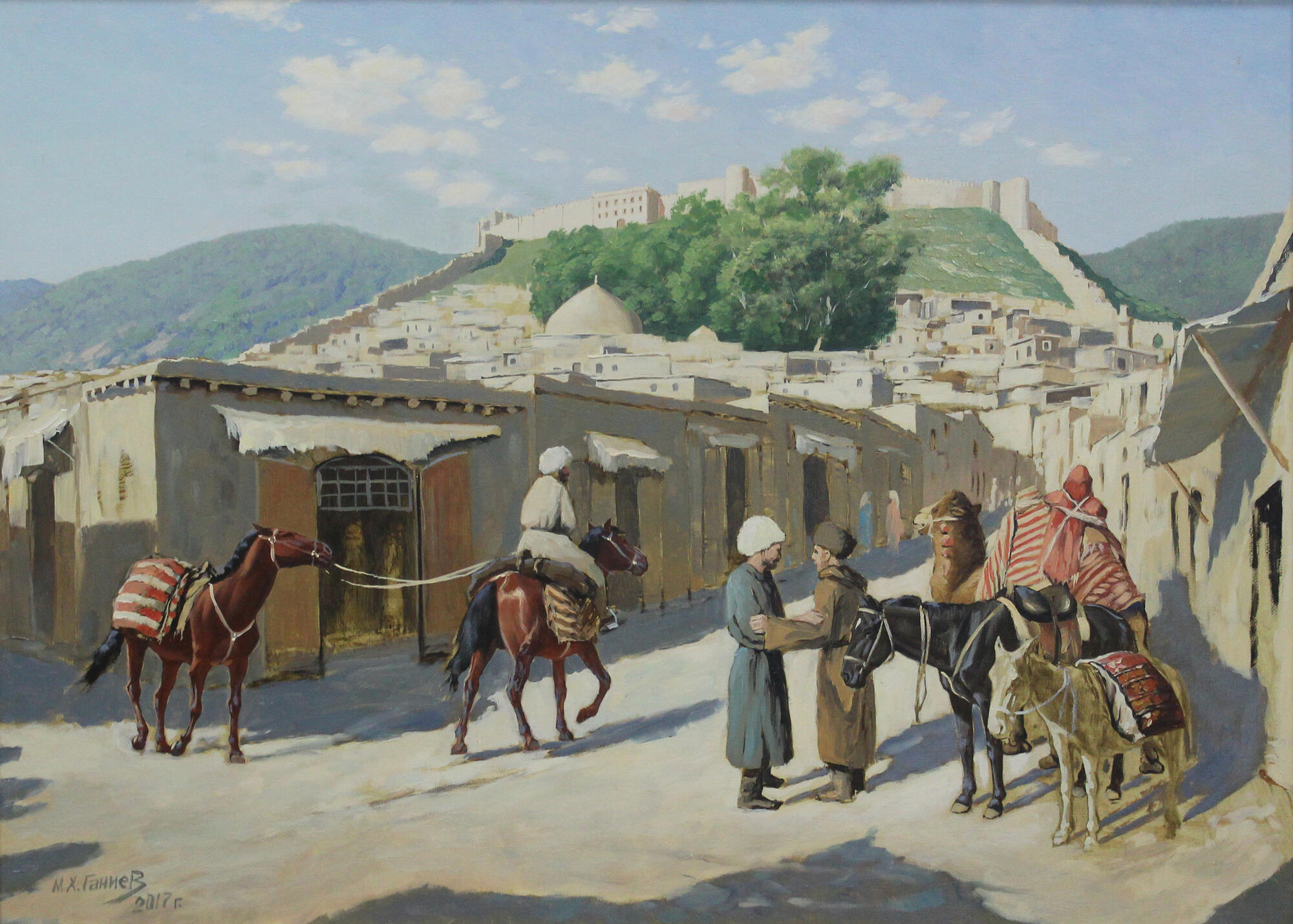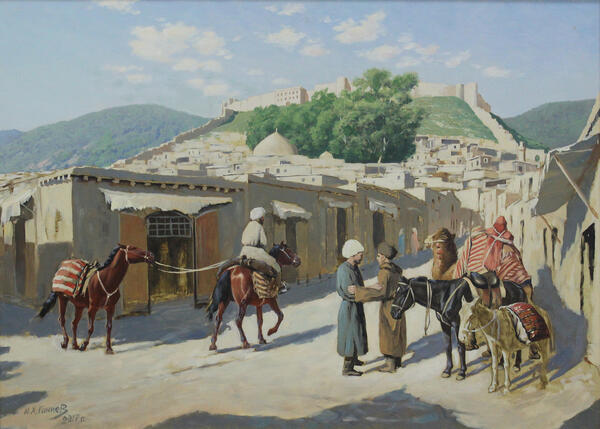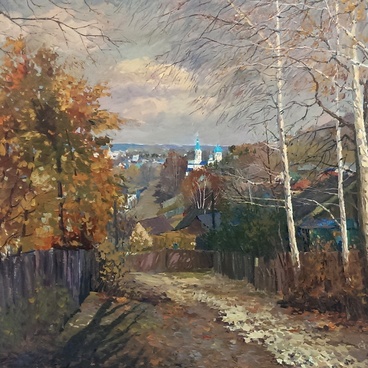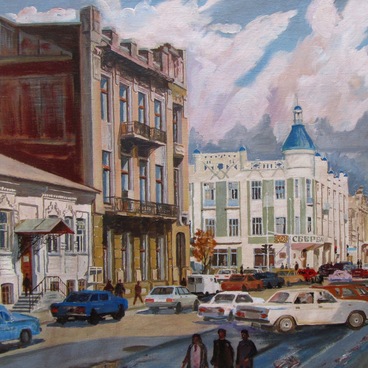The genre painting “Derbent. 18th Century. Early Morning of the Bazaar Day” was created by Dagestan artist Marat Ganiev in warm colors.
In the foreground, in the central part of the painting, the artist depicted highlanders arriving at the city bazaar. One of them is on horseback, leading another horse by the bridle — both animals carry bales of goods. To the right of the highlander, two men have an animated conversation, and next to them one can see a camel, a horse and a donkey, also loaded with goods. In the background, the upper part of the painting shows the citadel of Naryn-Kala in Derbent and residential buildings at the foot of the hill.
The first settlements on the area of modern Derbent appeared in the Early Bronze Age, at the end of the 4th millennium B.C. The “Caspian Gate” was first mentioned in the records of ancient Greek historian and philosopher Hecataeus of Miletus in the 6th century BC. The city itself was founded in 438 BC. It was a Persian fortress, which consisted of the Naryn-Kala citadel located on a hill, and two stone walls. These walls descended from the fortress to the water and thus locked the narrow passage between the sea and the Caucasus mountains and protected the city from the north and south.
Over time, Derbent became a major trading center, where goods came not only from all over the region, but also from many neighboring countries. This was due to the fortunate geographical location of the city and the availability of a seaport. For centuries, the fortress played an important defensive role. New inhabitants rebuilt and renovated it, and today one can trace the whole history of Derbent by the preserved buildings erected in different periods.
Derbent first became part of the Russian Empire in 1722 as a result of the Persian campaign of Peter the Great. When the monarch settled in the khan’s palace, the local beys presented him with the keys of the city and said: “Derbent was founded by Alexander the Great, and therefore there is nothing more decent and fair as a city founded by a great monarch, to be given to another monarch, who is just as great”. Russian troops recaptured the fortress of Naryn-Kala during the war with the Persians in 1796, but soon the conquered territories were returned.
In the foreground, in the central part of the painting, the artist depicted highlanders arriving at the city bazaar. One of them is on horseback, leading another horse by the bridle — both animals carry bales of goods. To the right of the highlander, two men have an animated conversation, and next to them one can see a camel, a horse and a donkey, also loaded with goods. In the background, the upper part of the painting shows the citadel of Naryn-Kala in Derbent and residential buildings at the foot of the hill.
The first settlements on the area of modern Derbent appeared in the Early Bronze Age, at the end of the 4th millennium B.C. The “Caspian Gate” was first mentioned in the records of ancient Greek historian and philosopher Hecataeus of Miletus in the 6th century BC. The city itself was founded in 438 BC. It was a Persian fortress, which consisted of the Naryn-Kala citadel located on a hill, and two stone walls. These walls descended from the fortress to the water and thus locked the narrow passage between the sea and the Caucasus mountains and protected the city from the north and south.
Over time, Derbent became a major trading center, where goods came not only from all over the region, but also from many neighboring countries. This was due to the fortunate geographical location of the city and the availability of a seaport. For centuries, the fortress played an important defensive role. New inhabitants rebuilt and renovated it, and today one can trace the whole history of Derbent by the preserved buildings erected in different periods.
Derbent first became part of the Russian Empire in 1722 as a result of the Persian campaign of Peter the Great. When the monarch settled in the khan’s palace, the local beys presented him with the keys of the city and said: “Derbent was founded by Alexander the Great, and therefore there is nothing more decent and fair as a city founded by a great monarch, to be given to another monarch, who is just as great”. Russian troops recaptured the fortress of Naryn-Kala during the war with the Persians in 1796, but soon the conquered territories were returned.
In 1813, Derbent finally became part of the Russian Empire, and in 1846 it was a provincial city within the Dagestan region. In 2003, UNESCO recognized the old city of Derbent with its traditional buildings as a World Heritage Site of Humanity.



